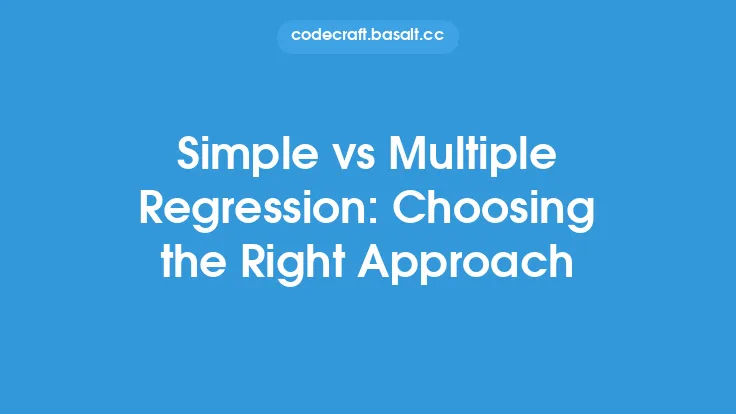Clustering is a fundamental unsupervised learning technique in machine learning that involves grouping similar data points into clusters. The goal of clustering is to identify patterns or structures in the data that are not easily visible by other means. However, evaluating the quality of the clusters obtained from a clustering algorithm is a crucial step in the clustering process. This is where clustering validation metrics come into play. Clustering validation metrics are used to assess the quality of the clusters and to determine the optimal number of clusters.
Introduction to Clustering Validation Metrics
Clustering validation metrics are used to evaluate the quality of the clusters obtained from a clustering algorithm. These metrics can be broadly classified into three categories: internal metrics, external metrics, and relative metrics. Internal metrics evaluate the quality of the clusters based on the data itself, without referencing any external information. External metrics, on the other hand, evaluate the quality of the clusters based on external information, such as class labels. Relative metrics compare the quality of the clusters obtained from different clustering algorithms.
Internal Clustering Validation Metrics
Internal clustering validation metrics are used to evaluate the quality of the clusters based on the data itself. Some common internal clustering validation metrics include:
- Silhouette Coefficient: The silhouette coefficient is a measure of how similar an object is to its own cluster compared to other clusters. The range of the silhouette coefficient is from -1 to 1, where a higher value indicates that the object is well matched to its own cluster and poorly matched to neighboring clusters.
- Calinski-Harabasz Index: The Calinski-Harabasz index is a measure of the ratio of between-cluster variance to within-cluster variance. A higher value of the Calinski-Harabasz index indicates that the clusters are well separated and compact.
- Davies-Bouldin Index: The Davies-Bouldin index is a measure of the similarity between each pair of clusters based on their centroid distances and scatter within the clusters. A lower value of the Davies-Bouldin index indicates that the clusters are well separated and compact.
External Clustering Validation Metrics
External clustering validation metrics are used to evaluate the quality of the clusters based on external information, such as class labels. Some common external clustering validation metrics include:
- Rand Index: The Rand index is a measure of the similarity between the clusters obtained from a clustering algorithm and the actual class labels. The range of the Rand index is from 0 to 1, where a higher value indicates that the clusters are similar to the actual class labels.
- Adjusted Rand Index: The adjusted Rand index is a measure of the similarity between the clusters obtained from a clustering algorithm and the actual class labels, adjusted for chance. The range of the adjusted Rand index is from -1 to 1, where a higher value indicates that the clusters are similar to the actual class labels.
- F-Measure: The F-measure is a measure of the similarity between the clusters obtained from a clustering algorithm and the actual class labels, based on precision and recall. The range of the F-measure is from 0 to 1, where a higher value indicates that the clusters are similar to the actual class labels.
Relative Clustering Validation Metrics
Relative clustering validation metrics are used to compare the quality of the clusters obtained from different clustering algorithms. Some common relative clustering validation metrics include:
- Cluster Stability: Cluster stability is a measure of the consistency of the clusters obtained from a clustering algorithm across different runs. A higher value of cluster stability indicates that the clusters are consistent across different runs.
- Cluster Separability: Cluster separability is a measure of the separation between the clusters obtained from a clustering algorithm. A higher value of cluster separability indicates that the clusters are well separated.
Choosing the Right Clustering Validation Metric
Choosing the right clustering validation metric depends on the specific clustering problem and the characteristics of the data. Internal clustering validation metrics are useful when there is no external information available, while external clustering validation metrics are useful when there is external information available. Relative clustering validation metrics are useful when comparing the quality of the clusters obtained from different clustering algorithms. It is also important to consider the computational complexity and the interpretability of the clustering validation metric.
Best Practices for Clustering Validation
Some best practices for clustering validation include:
- Using multiple clustering validation metrics to get a comprehensive understanding of the quality of the clusters.
- Visualizing the clusters using dimensionality reduction techniques, such as PCA or t-SNE, to get a visual understanding of the clusters.
- Using clustering validation metrics to determine the optimal number of clusters.
- Using clustering validation metrics to compare the quality of the clusters obtained from different clustering algorithms.
- Considering the computational complexity and the interpretability of the clustering validation metric when choosing a metric.
Common Challenges in Clustering Validation
Some common challenges in clustering validation include:
- Choosing the right clustering validation metric for the specific clustering problem.
- Dealing with high-dimensional data, where the clustering validation metrics may not be effective.
- Dealing with noisy or missing data, where the clustering validation metrics may not be effective.
- Interpreting the results of the clustering validation metrics, which can be challenging, especially for non-technical users.
- Balancing the trade-off between the quality of the clusters and the computational complexity of the clustering algorithm.
Future Directions in Clustering Validation
Some future directions in clustering validation include:
- Developing new clustering validation metrics that can handle high-dimensional data and noisy or missing data.
- Developing clustering validation metrics that can provide more interpretable results, especially for non-technical users.
- Developing clustering validation metrics that can be used to compare the quality of the clusters obtained from different clustering algorithms.
- Developing clustering validation metrics that can be used to determine the optimal number of clusters.
- Integrating clustering validation metrics into clustering algorithms to provide a more comprehensive clustering framework.





